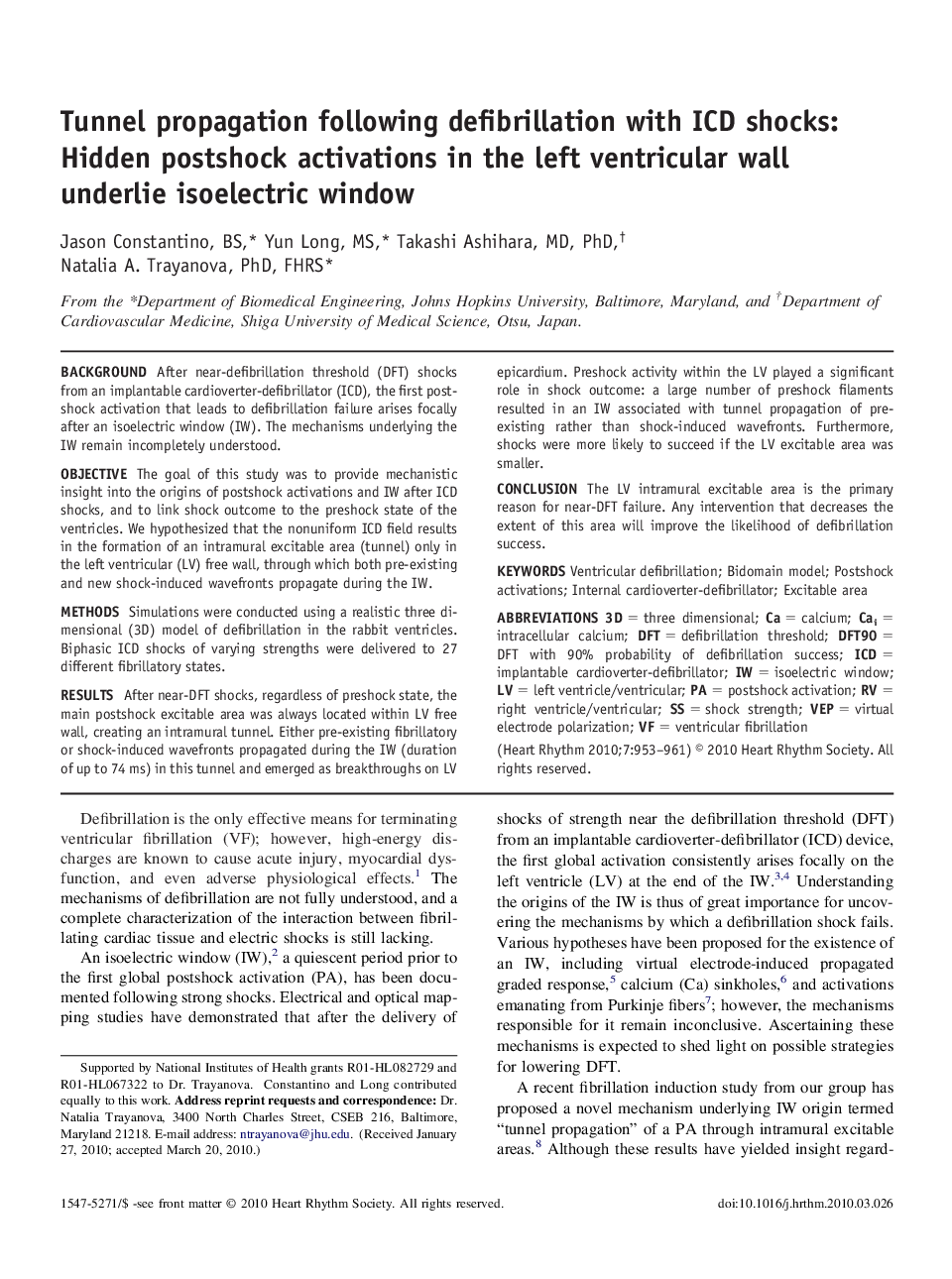| کد مقاله | کد نشریه | سال انتشار | مقاله انگلیسی | نسخه تمام متن |
|---|---|---|---|---|
| 2923311 | 1175870 | 2010 | 9 صفحه PDF | دانلود رایگان |

BackgroundAfter near-defibrillation threshold (DFT) shocks from an implantable cardioverter-defibrillator (ICD), the first postshock activation that leads to defibrillation failure arises focally after an isoelectric window (IW). The mechanisms underlying the IW remain incompletely understood.ObjectiveThe goal of this study was to provide mechanistic insight into the origins of postshock activations and IW after ICD shocks, and to link shock outcome to the preshock state of the ventricles. We hypothesized that the nonuniform ICD field results in the formation of an intramural excitable area (tunnel) only in the left ventricular (LV) free wall, through which both pre-existing and new shock-induced wavefronts propagate during the IW.MethodsSimulations were conducted using a realistic three dimensional (3D) model of defibrillation in the rabbit ventricles. Biphasic ICD shocks of varying strengths were delivered to 27 different fibrillatory states.ResultsAfter near-DFT shocks, regardless of preshock state, the main postshock excitable area was always located within LV free wall, creating an intramural tunnel. Either pre-existing fibrillatory or shock-induced wavefronts propagated during the IW (duration of up to 74 ms) in this tunnel and emerged as breakthroughs on LV epicardium. Preshock activity within the LV played a significant role in shock outcome: a large number of preshock filaments resulted in an IW associated with tunnel propagation of pre-existing rather than shock-induced wavefronts. Furthermore, shocks were more likely to succeed if the LV excitable area was smaller.ConclusionThe LV intramural excitable area is the primary reason for near-DFT failure. Any intervention that decreases the extent of this area will improve the likelihood of defibrillation success.
Journal: Heart Rhythm - Volume 7, Issue 7, July 2010, Pages 953–961